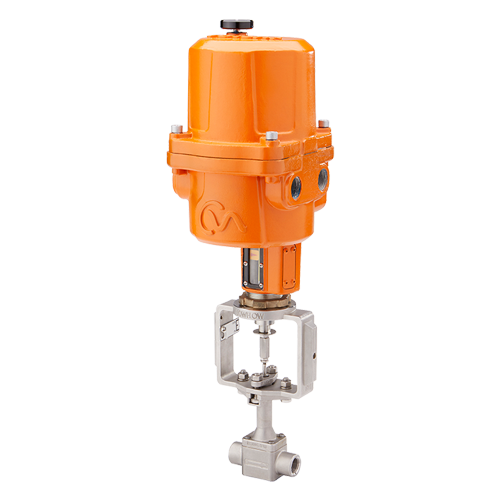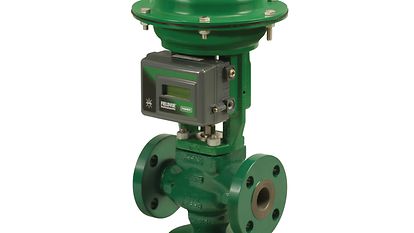Maximizing System Control with High-Performance Control Valves
Wiki Article

Maximize Power Cost Savings and Comfort With Advanced Structure Automation Controls
In the world of modern-day architecture and center monitoring, the assimilation of sophisticated building automation manages stands as an essential improvement. By harnessing the power of automation, buildings can adapt, react, and develop in methods that were once unimaginable.Energy Effectiveness Advantages
Power efficiency advantages can substantially reduce power usage and functional costs in buildings. By implementing energy-efficient practices and modern technologies, structure proprietors and operators can attain significant savings while additionally adding to environmental sustainability. One of the primary benefits of boosting energy performance in buildings is the reduction of energy costs. Energy-efficient systems, such as advanced building automation controls, can optimize making use of resources like home heating, lighting, and cooling, resulting in reduced power costs in time.In addition, enhanced energy effectiveness can extend the life-span of structure devices and systems. By operating more successfully, cooling and heating systems, light, and other structure elements experience less damage, leading to decreased upkeep and substitute costs. In addition, energy-efficient structures often command higher residential or commercial property values and rental rates, supplying lasting economic benefits to owners.
Additionally, energy efficiency can boost resident convenience and efficiency. Properly controlled interior atmospheres with optimum lighting and thermal conditions produce an even more conducive and pleasurable workspace, causing improved worker satisfaction and performance. Generally, the power effectiveness advantages connected with innovative building automation controls are complex, encompassing expense financial savings, ecological stewardship, and resident well-being.
Enhanced Comfort Control
Enhancing convenience control in structure atmospheres calls for an innovative combination of sophisticated automation systems for optimal occupant well-being. By utilizing innovative structure automation controls, centers can customize the interior setting to fulfill the certain demands and choices of owners. control valves.Enhanced comfort control exceeds standard temperature adjustments. It consists of attributes such as customized settings, occupancy sensing units, and natural light usage to produce a responsive and vibrant atmosphere. By including these advanced controls, buildings can not only enhance comfort however additionally improve energy effectiveness by maximizing system procedures based upon actual occupancy and usage patterns. Eventually, focusing on resident convenience through innovative automation systems causes a more delightful and healthier interior environment.
Functional Efficiency Improvements

Furthermore, the execution of real-time surveillance and analytics devices allows building drivers to recognize power ineffectiveness and operational anomalies immediately. By constantly checking power use patterns and system efficiency metrics, changes can be made in real-time to optimize energy intake and make certain peak operational efficiency. control try this valves. Furthermore, including need reaction methods right into building automation controls can additionally enhance operational effectiveness by dynamically readjusting power usage based on grid conditions and prices signals
Indoor Environment Optimization
Efficient indoor climate optimization is a basic facet of building automation controls, making certain occupants' convenience and well-being while optimizing power savings. By making use of advanced sensing units and controls, building automation systems can continually check and adjust temperature, moisture degrees, air quality, and air flow to create an optimal interior environment. Preserving constant and comfy conditions not only enhances resident fulfillment however also increases productivity and total health.Interior climate optimization also plays an important function in energy performance. By fine-tuning home heating, air conditioning, and ventilation systems based upon real-time information and tenancy patterns, developing automation controls can substantially minimize energy consumption - control valves. Executing approaches such as demand-controlled ventilation and thermal zoning can help decrease energy waste while making certain that each area of the structure gets the necessary conditioning.

Sustainable Setting Development
Building automation manages not only optimize indoor environment problems for power effectiveness and resident comfort but also lay the structure for visit here developing a lasting atmosphere with calculated administration of resources and systems. By integrating advanced building automation innovations, such as sensing units, actuators, and smart software program, facilities can keep track of and change power use in real-time to reduce waste and decrease their carbon impact. These systems enable predictive upkeep, recognizing potential concerns prior to they escalate and enhancing devices efficiency to enhance longevity and effectiveness.In addition, lasting atmosphere production expands beyond power management to encompass water preservation, waste decrease, and indoor air quality renovation. Building automation controls can manage water usage, detect leakages, and guarantee correct garbage disposal practices, contributing to general sustainability efforts. In addition, by managing and monitoring air flow and filtration systems, these technologies improve resident wellness and efficiency while decreasing power usage related to HVAC procedures.
Verdict
To conclude, progressed structure automation regulates deal considerable advantages in terms of energy financial savings, comfort control, operational efficiency, indoor climate optimization, and creating a sustainable environment. By applying these controls, buildings can accomplish optimum efficiency while reducing energy usage and enhancing owner convenience. It is apparent that the use of innovative automation technology is important in improving structure efficiency and producing an extra lasting future.Power performance advantages can substantially minimize power intake and functional costs in buildings. In general, the power performance advantages associated with advanced building automation controls are diverse, incorporating price financial savings, environmental stewardship, and resident wellness.
In addition, incorporating demand action methods into building automation controls can even more improve operational effectiveness by dynamically changing energy usage based on grid conditions and rates signals.
Building automation manages not only maximize indoor climate problems for energy efficiency and owner convenience but also lay the structure for producing a sustainable setting with strategic management of sources and systems.In conclusion, progressed structure automation manages offer significant benefits in terms of look these up energy savings, comfort control, operational efficiency, indoor environment optimization, and producing a sustainable environment.
Report this wiki page